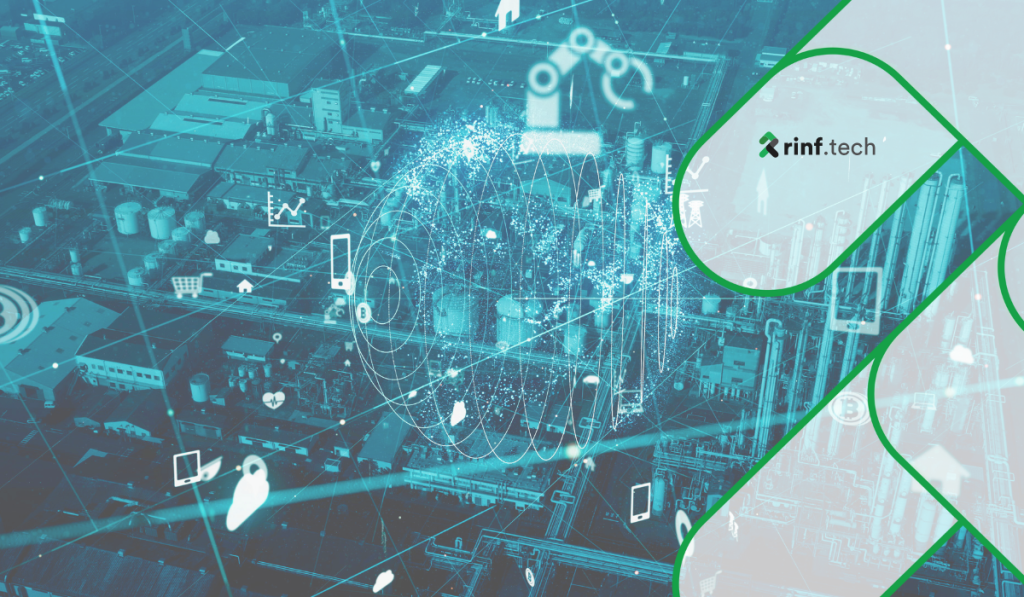
How IoT is Revolutionizing Agriculture: Key Innovations and Future Prospects
Discover how IoT is transforming traditional farming through key innovations, real-world success stories, and future trends that are shaping the agricultural sector.
According to the IDC report, connected IoT devices are expected to reach $41.6 billion by 2025. However, interoperability issues, a substantial barrier for 40% of IoT customers, could improve this exponential growth potential. These statistics highlight the pressing need for solutions that enable devices to interact effectively, thereby unlocking the potential of IoT to drive innovation and operational efficiency.
Furthermore, interoperability is not just a technical challenge but also a strategic one, affecting how companies can leverage IoT to enter or transform new markets. For instance, in smart homes and cities, interoperability can mean the difference between a seamlessly integrated urban environment and a disorganized collection of smart devices. The capability of different systems to work together can significantly enhance the user experience, leading to increased adoption and customer satisfaction.
This article delves deep into the complex interoperability challenges within the IoT ecosystem and how they can be solved.
IoT is a rapidly growing sector, and interoperability is one of its biggest challenges. As more devices are developed for the IoT, it becomes increasingly important for them to work together seamlessly. Without interoperability, the effectiveness and adoption of IoT technologies are significantly impacted. Therefore, these systems must be able to communicate and function together across various sectors. Here are some of the most common challenges of interoperability in IoT.
The need for variety in hardware, communication protocols, and data formats causes the lack of interoperability in the IoT ecosystem. Devices and systems often operate on different frequencies and use protocols such as Zigbee, Bluetooth, and Wi-Fi, each with its characteristics and intended purposes. The lack of a common standard leads to operational inefficiencies and increased costs due to the need for additional middleware or adapter software to facilitate communication between devices. A study by McKinsey highlighted that interoperability is essential for unlocking up to 40% of the total value IoT technologies can provide. This statistic highlights the critical need for industry-wide standardization to simplify integration and enable a seamless IoT ecosystem.
Proprietary technologies pose another significant barrier to IoT interoperability. Many manufacturers develop their unique protocols and standards to differentiate their products. However, this practice often leads to ecosystems that are not just closed but are also incompatible with other systems, creating silos within the IoT landscape. This fragmentation results in vendor lock-in scenarios, where consumers and businesses are confined to products from specific providers, inhibiting flexibility and choice. This need for interoperability among proprietary systems is one of the top concerns for enterprises adopting IoT solutions, as it limits their ability to scale and integrate new technologies efficiently.
The integration of various IoT systems increases the complexity of the network, which in turn raises significant security challenges. Each additional device and protocol can introduce vulnerabilities, making the entire network more susceptible to attacks. The more interconnected the devices, the greater the risk that a single compromised device could lead to widespread security breaches. An industry report noted that 70% of IoT devices are vulnerable to security threats, underscoring the importance of developing robust security protocols that can be uniformly applied across different devices and platforms to ensure secure and reliable communication.
Many IoT devices are designed to be cost-effective and resource-efficient, which often means they have limited processing power, memory, and battery life. These limitations challenge the implementation of complex interoperability protocols and robust security measures, which typically require more resources. The constraints become particularly problematic in scenarios involving thousands or even millions of devices, such as industrial IoT applications or smart cities. Balancing the performance of these devices while ensuring they can communicate effectively across various platforms remains a key challenge in expanding the capabilities and reach of IoT networks.
Handling the massive volumes of data generated by IoT devices presents significant challenges in data management and ownership. Effective interoperability requires the seamless exchange of data and its proper management, including aspects like storage, analysis, and privacy. Moreover, when data crosses borders between different jurisdictions, it encounters varying legal and regulatory environments concerning data privacy and security. Data management and compliance issues become increasingly complex as IoT deployments scale up. For instance, discrepancies in data regulation between regions can complicate the deployment of global IoT solutions, necessitating a nuanced approach to data governance and interoperability.
Achieving interoperability across various devices and systems is crucial to realizing IoT’s full potential. Although the challenges are significant, several practical strategies and solutions exist to overcome these challenges.
Establishing standardized protocols and frameworks across IoT devices and systems is one of the most effective solutions to the interoperability challenge. By embracing and implementing industry-wide standards, devices from different manufacturers can communicate more smoothly, reducing the complexity and costs associated with IoT deployments. Organizations like the Internet Engineering Task Force (IETF) and the Institute of Electrical and Electronics Engineers (IEEE) are actively working to develop such standards. The widespread adoption of these standards facilitates integration and accelerates innovation by making it easier for developers to create interoperable solutions. For example, the success of standard protocols like MQTT and CoAP in achieving interoperable communication in IoT is a testament to the importance of such efforts. These protocols have enabled adequate device-to-cloud data flow, significantly boosting IoT scalability and efficiency.
Collaboration among technology manufacturers, industry bodies, and governmental organizations is not just a necessity, but a catalyst for fostering an open IoT ecosystem. By promoting open standards and encouraging transparency, the industry can overcome the barriers of proprietary technologies, leading to more innovative and efficient solutions. Such collaboration also extends to sharing best practices and security measures, which can enhance the overall security posture of IoT systems. Initiatives like the Open Connectivity Foundation (OCF), which aims to create a set of standard communication protocols, are examples of how industry collaboration can lead to significant improvements in interoperability. Furthermore, governmental regulations can play a supportive role by encouraging open standards and ensuring IoT products comply with them before they reach the market, thereby ensuring a more unified IoT environment.
Testing and certification are not just formalities, but a pivotal part of ensuring that IoT devices are not only interoperable but also secure and reliable. By establishing rigorous testing protocols and certification processes, stakeholders can ensure that devices meet established interoperability standards before deployment. This helps maintain compatibility and builds consumer trust in IoT technologies, assuring them of the reliability and safety of the devices they use. Certification bodies such as Underwriters Laboratories (UL) and the National Institute of Standards and Technology (NIST) provide frameworks and standards for IoT devices, which help in verifying the interoperability and security of these devices. Such measures are essential for promoting widespread adoption and fostering a trustworthy IoT ecosystem.
Interoperability platforms and gateways provide a practical solution to the challenge of enabling communication between devices that use different protocols and standards. These platforms act as translators or mediators, allowing devices to communicate seamlessly across various technological boundaries. For instance, platforms like AWS IoT Greengrass and Microsoft Azure IoT Hub can bridge multiple devices and protocols, facilitating more accessible and practical integration. These solutions enhance the flexibility of IoT systems and reduce the need for extensive modifications to existing infrastructure, making them a cost-effective option for achieving greater interoperability.
Edge computing represents a transformative approach to data processing in IoT. By processing data at or near the source, edge computing reduces the dependence on central servers, thus minimizing latency and bandwidth issues while enhancing data processing speed. This decentralized approach improves system responsiveness and enables more efficient real-time data processing across various devices. Furthermore, by localizing data processing, edge computing inherently supports interoperability by simplifying the integration of diverse technologies within the same locale. This method is particularly beneficial in industries like manufacturing and automotive, where real-time data and system reliability are paramount.
Achieving a robust and reliable ability for different IoT devices to work together is crucial to fully realizing IoT technology’s transformative potential. It enables devices to communicate seamlessly across various platforms and thus enhances operational efficiency, user experience, and system reliability. As the IoT landscape continues to evolve, interoperability remains vital. It is the key to enabling the next generation of IoT solutions to drive innovation across multiple industries, from smart homes to smart cities.
The proactive adoption of these solutions by manufacturers, developers, and regulatory bodies will play a pivotal role in shaping the future of IoT.
For companies looking to thrive in this dynamic environment, partnering with experienced IoT solution providers like rinf.tech, with strong R&D capabilities in embedded engineering, is crucial. Such collaboration can ensure the development of interoperable, scalable, and secure IoT systems, positioning your company as a leader in the innovative world of IoT.

Discover how IoT is transforming traditional farming through key innovations, real-world success stories, and future trends that are shaping the agricultural sector.

Delving into the IoT device onboarding requirements, challenges and implementation best practices across smart home, industrial, and healthcare settings.

Delving into the complexities of AIoT, exploring its core principles, current state, challenges, and future trends.
Copyright © 2023 rinf.tech. All Rights Reserved.
Terms & Conditions. Cookie Policy. Privacy Policy.
Politica Avertizari de Integritate (RO)